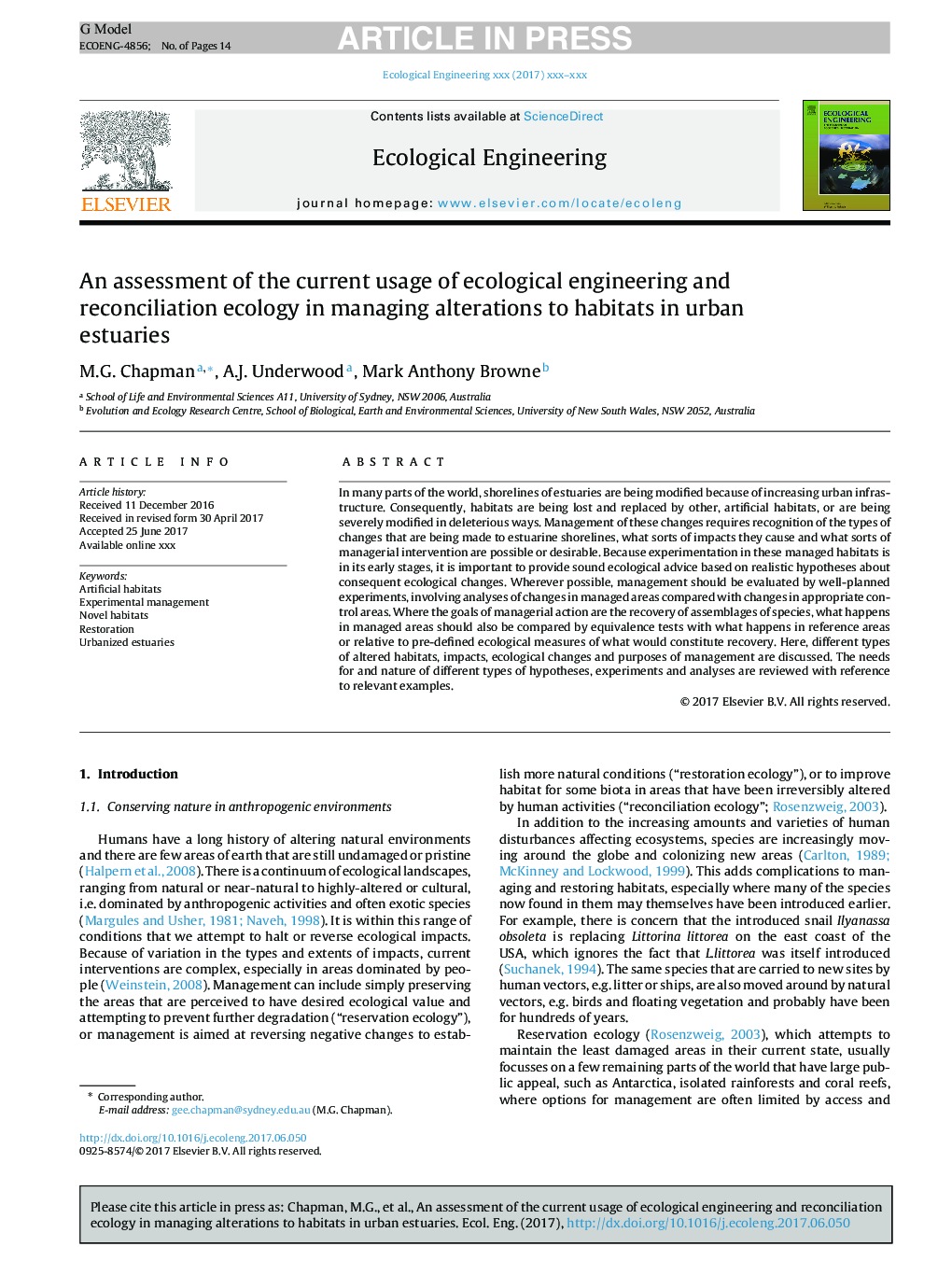| Article ID | Journal | Published Year | Pages | File Type |
|---|---|---|---|---|
| 10110137 | Ecological Engineering | 2018 | 14 Pages |
Abstract
In many parts of the world, shorelines of estuaries are being modified because of increasing urban infrastructure. Consequently, habitats are being lost and replaced by other, artificial habitats, or are being severely modified in deleterious ways. Management of these changes requires recognition of the types of changes that are being made to estuarine shorelines, what sorts of impacts they cause and what sorts of managerial intervention are possible or desirable. Because experimentation in these managed habitats is in its early stages, it is important to provide sound ecological advice based on realistic hypotheses about consequent ecological changes. Wherever possible, management should be evaluated by well-planned experiments, involving analyses of changes in managed areas compared with changes in appropriate control areas. Where the goals of managerial action are the recovery of assemblages of species, what happens in managed areas should also be compared by equivalence tests with what happens in reference areas or relative to pre-defined ecological measures of what would constitute recovery. Here, different types of altered habitats, impacts, ecological changes and purposes of management are discussed. The needs for and nature of different types of hypotheses, experiments and analyses are reviewed with reference to relevant examples.
Keywords
Related Topics
Life Sciences
Agricultural and Biological Sciences
Ecology, Evolution, Behavior and Systematics
Authors
M.G. Chapman, A.J. Underwood, Mark Anthony Browne,
